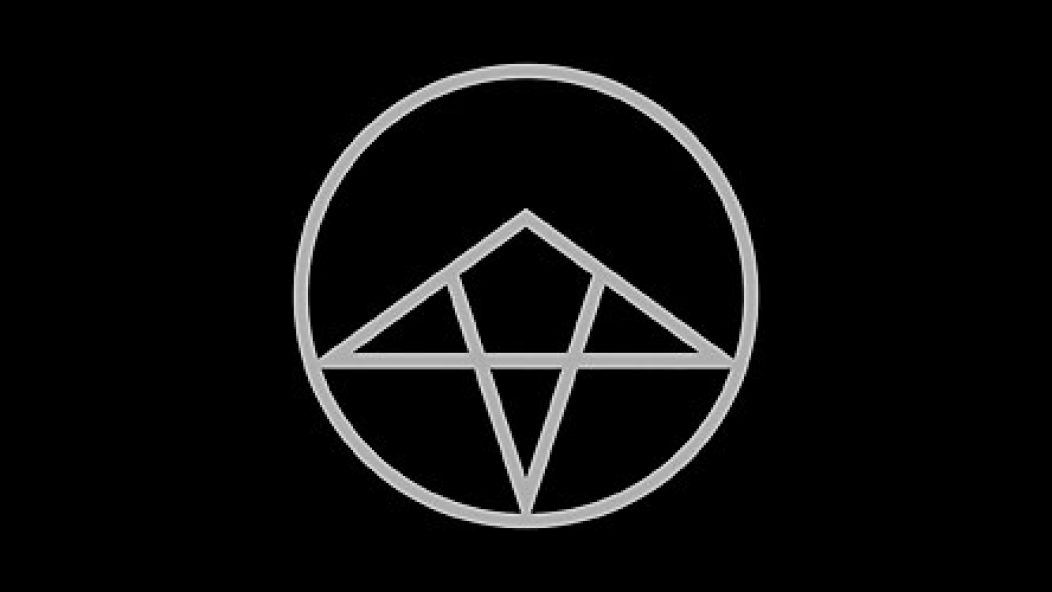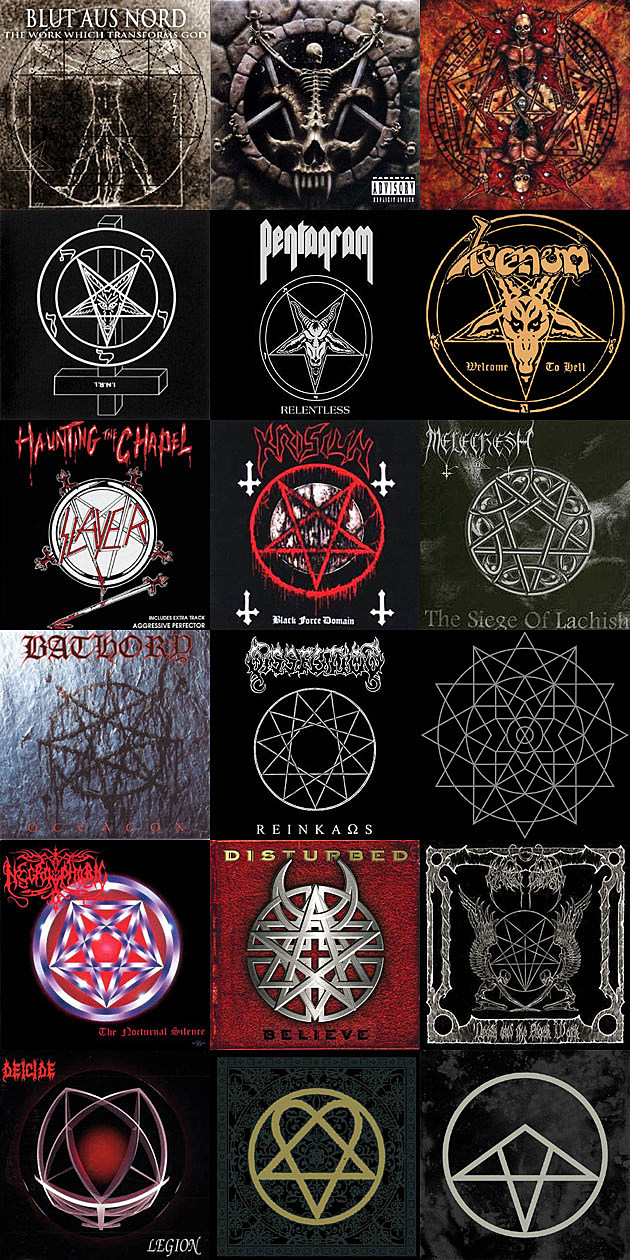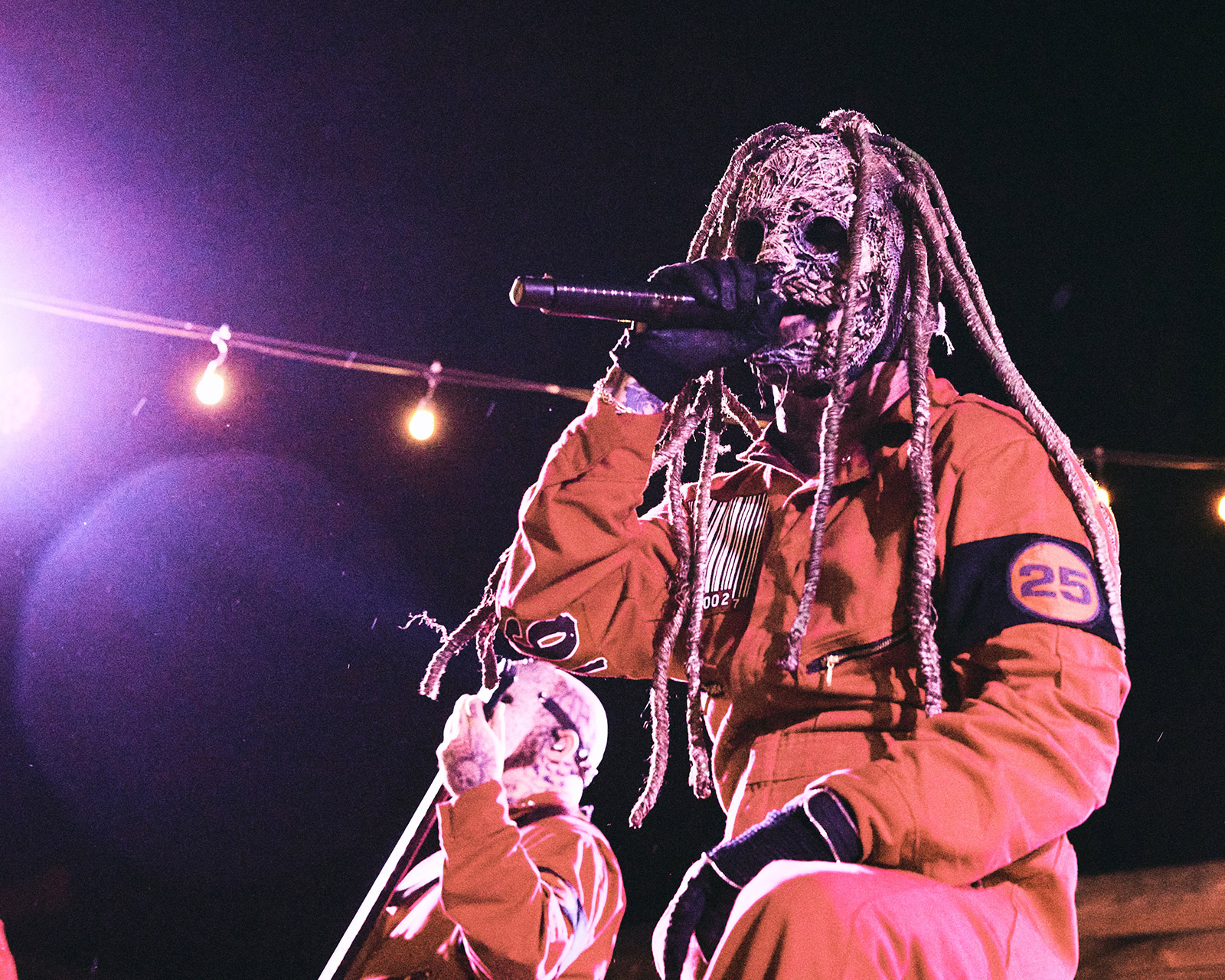
Album artwork of the month: Polygons in circles
. . .
ROW 1: HUMANS IN CIRCLES
ROW 2: BAPHOMET PENTAGRAMS
ROW 3: CLASSIC PENTAGRAMS
ROW 4: MULTI-POINTED STARS
ROW 5: PENTAGRAMS AND OTHER POLYGONS
ROW 6: PENTAGRAM VARIATIONS
. . .
My high school geometry teacher spent an entire academic quarter teaching circles. Each assignment was a sheet of paper with a large circle on it. Many line segments criss-crossed each circle. Our task was to calculate the angles of every intersection of those segments. It was a strange and rigorous introduction to various mathematical principles.
Decades later, the fascination with circles remains with me. The symbol within a circle is one of civilization’s most powerful images. Not surprisingly, metal album covers have drawn liberally on that power, specifically of the polygon within a circle. This practice has strong roots in the occult. I don’t claim any familiarity with the occult – and, to be honest, such familiarity is not a priority for me. So I don’t offer much insight here beyond what one can glean from Illuminati-and-dollar-bill-level research regarding occult symbology. (See this handy wiki on occult symbolism.) But one’s eyes are sufficient to see that the above symbols have great power. Let’s at least find out what they are.
. . .
ROW 1: HUMANS IN CIRCLES
Left to right
Blut aus Nord – The Work Which Transforms God
Slayer – Divine Intervention
Averse Sefira – Tetragrammatical Astygmata
. . .
Some of the pentagram’s power come from the fact that the human head and extended limbs form a star. Hence the power of these three album covers. Blut aus Nord’s The Work Which Transforms God uses Leonardo da Vinci’s “Vitruvian Man” and adds all sorts of polygonal action within the circle. The gender of the figure on Wes Benscoter’s cover for Slayer’s Divine Intervention is indeterminate; but he might have given teeth, so to speak, to the concept of the vagina dentata. Averse Sefira’s Tetragrammatical Astygmata feaures a pentagram in the middle and a heptagrammatical (seven-pointed) framework – see also Celtic Frost’s Morbid Tales and Triptykon’s sigil.
. . .
ROW 2: BAPHOMET PENTAGRAMS
Left to right
Jamra – The Second Coming
Pentagram – Relentless
Venom – Welcome to Hell
. . .
I only know of Jamra through the Church of Satan’s page about the Baphomet sigil. Evidently The Second Coming is an ultra-rare album of occult rock. Relentless and Welcome to Hell, of course, need no introduction. The Church of Satan’s page is a good read, setting forth a history of the Baphomet sigil, which dates back to 1897. Evidently the goat-in-a-pentagram (horns up, ears out, chin down) was the inversion of the human-in-a-pentagram (head up, limbs out).
. . .
ROW 3: CLASSIC PENTAGRAMS
Left to right
Slayer – Haunting the Chapel
Krisiun – Black Force Domain
Melechesh – The Siege of Lachish
. . .
When I was young, other kids spoke in hushed tones about pentagrams. Maybe all the Satan-fearing movies of the ’70s were fresh in the cultural memory. Maybe it was the conservative Midwestern town where I grew up. Now through metal I’ve become so numb to pentagrams and inverted crosses that the sight of a cross right-side-up is more violent to my constitution.
. . .
ROW 4: MULTI-POINTED STARS
Left to right
Bathory – Octagon
Dissection – Reinkaos
Coalesce – OX
. . .
I admit I haven’t heard Bathory beyond Twilight of the Gods, but evidently the eight-pointed artwork is the only good thing about Octagon. Dissection’s Reinkaos has a cool 11-pointed star (“hendecagram”). Therion also used the 11-pointed star on the covers of A’Arab Zaraq Lucid Dreaming, Vovin, and Secret of the Runes. What the 11-pointed star symbolizes, I have no idea.
Coalesce don’t seem like the types to have an extremely occult-looking album cover. Does anyone have any insight into that image?
. . .
ROW 5: PENTAGRAMS AND OTHER POLYGONS
Left to right
Necrophobic – The Nocturnal Silence
Disturbed – Believe
Nightbringer – Death and the Black Work
. . .
The pentagram-within-a-hexagon on the cover of Necrophobic’s The Nocturnal Silence is powerful. See the Order of the Eastern Star, an organization with Masonic ties. Disturbed’s Believe has both five-pointed and six-pointed stars. I have no clue what’s going on there. I’m also not sure what’s going on with Nightbringer’s Death and the Black Work, though it has both a pentagram and a Celtic Frost-style heptagram. It also reminds me of Deicide’s trifixion symbol.
. . .
ROW 6: PENTAGRAM VARIATIONS
Left to right
Deicide – Legion
HIM – Love Metal
Oh, Sleeper – Son of the Morning
. . .
Speaking of which, Deicide’s Legion has one of my all-time favorite covers. It renders the trifixion symbol as a sphere, emphasizing the pentagram and appearing almost like a human head. Bad-ass! Rounding has the opposite effect on HIM’s Love Metal. I haven’t heard HIM, but based on this logo, the music is probably not for me. Finally, Christian metalcore band Oh, Sleeper offer an interesting changeup with a “broken pentagram”. Daring! Regardless of one’s leanings, it’s hard to deny that the image is striking.
. . .
With all this occultic imagery in one place, I’ve probably opened the gates to hell, Hellraiser-style. (Maybe hell is a HIM show for eternity?) If that happened, I apologize.
If not – what fuel can you add to the fire? Any other good examples of polygons in metal circles?
. . .











